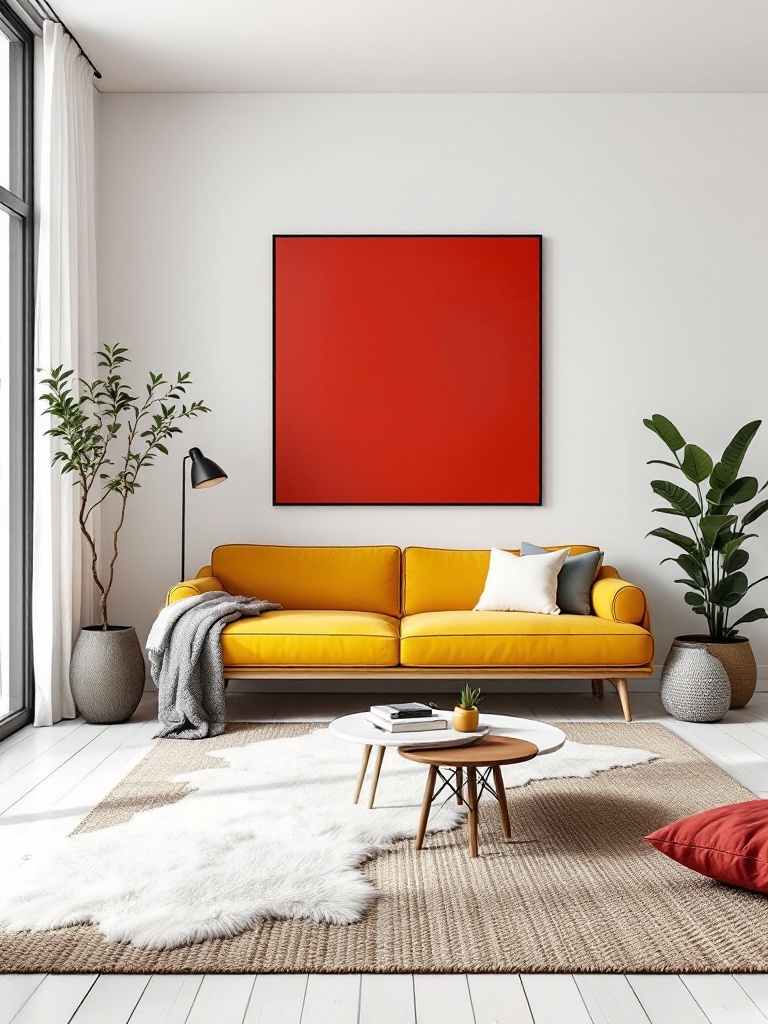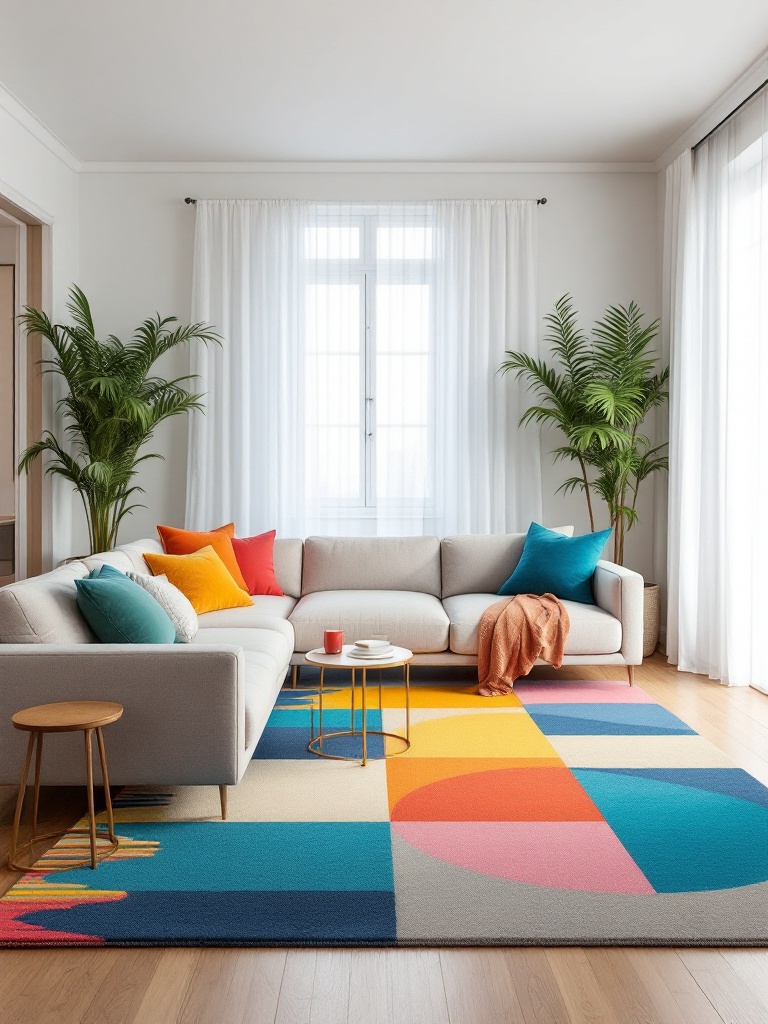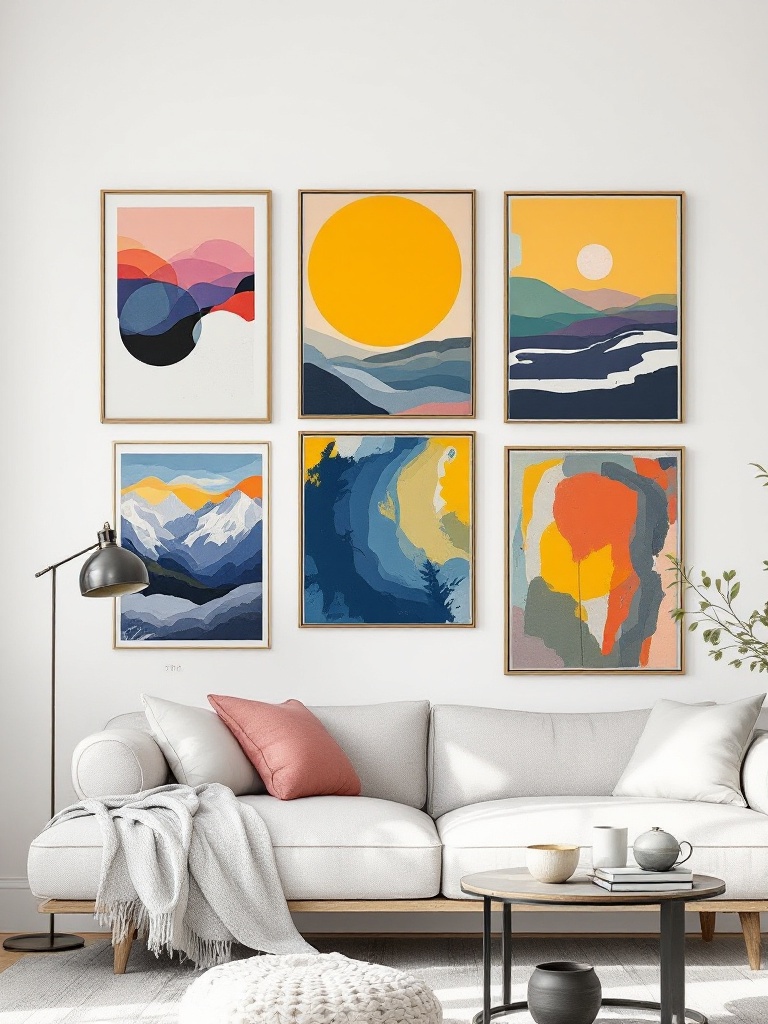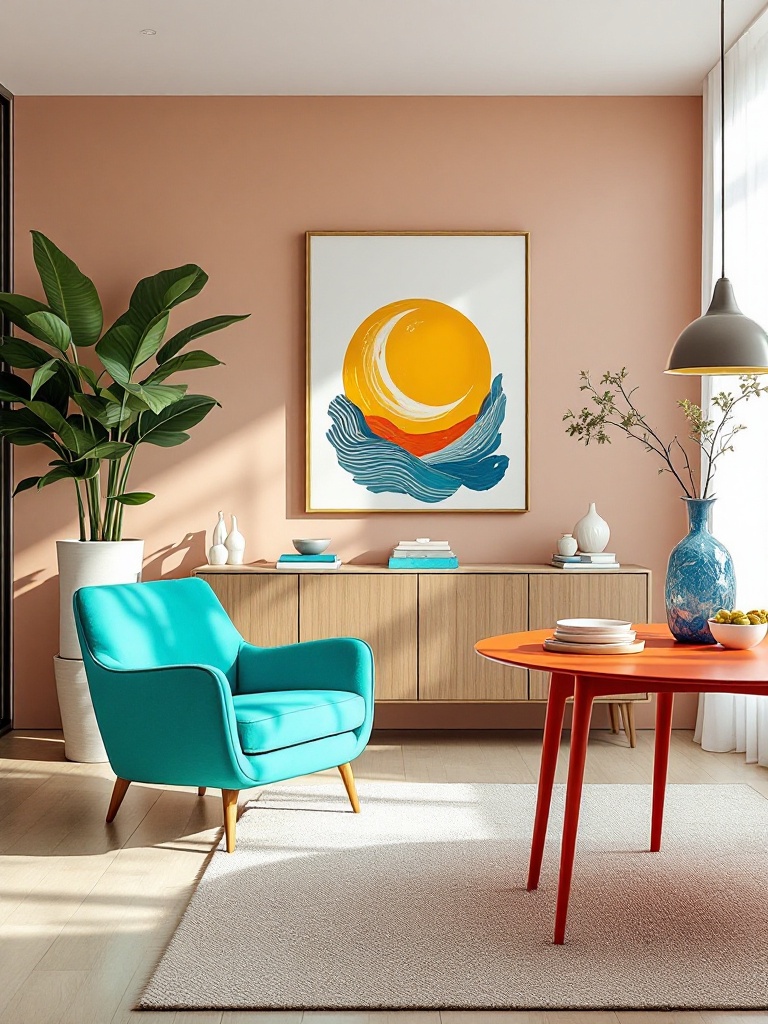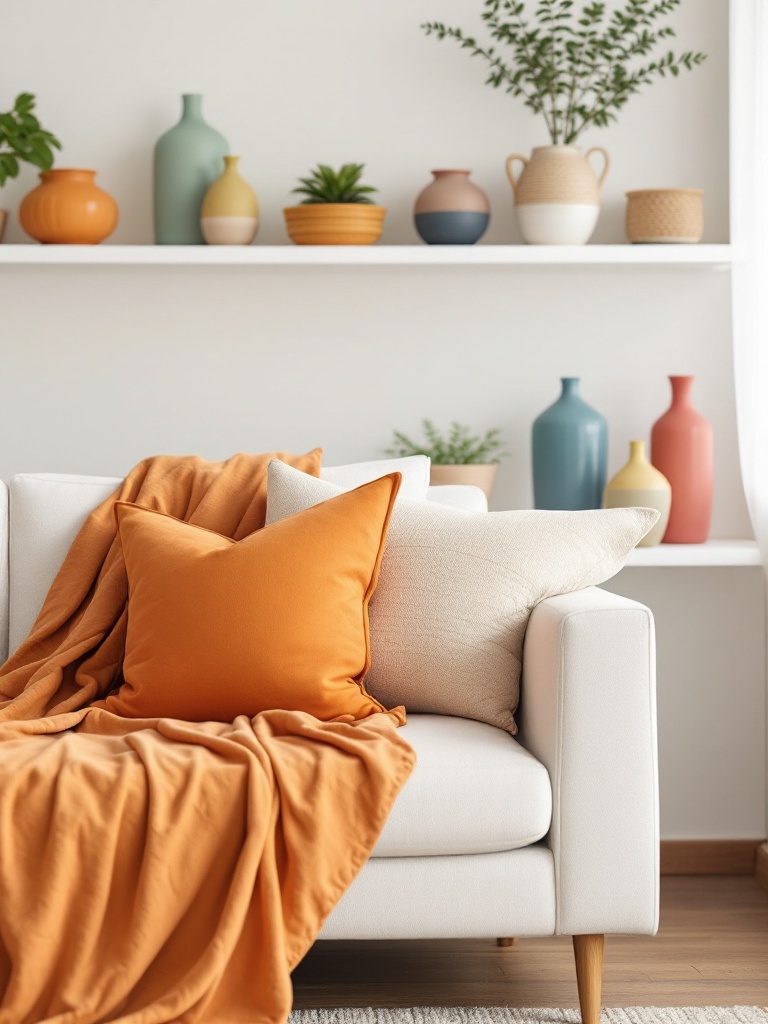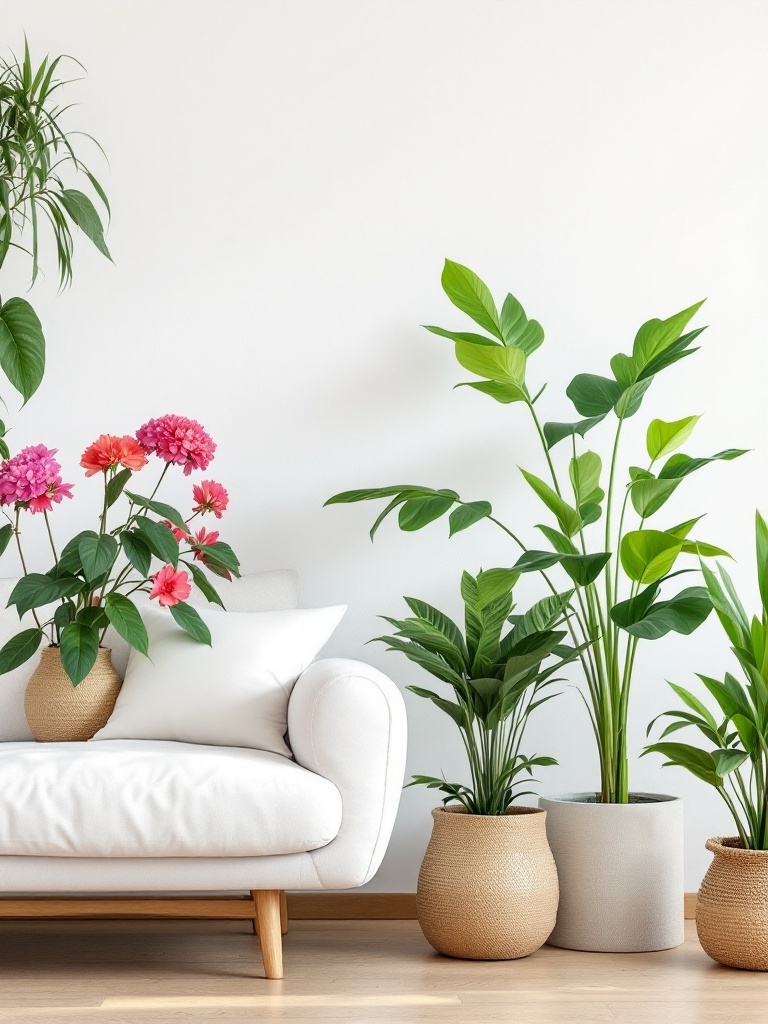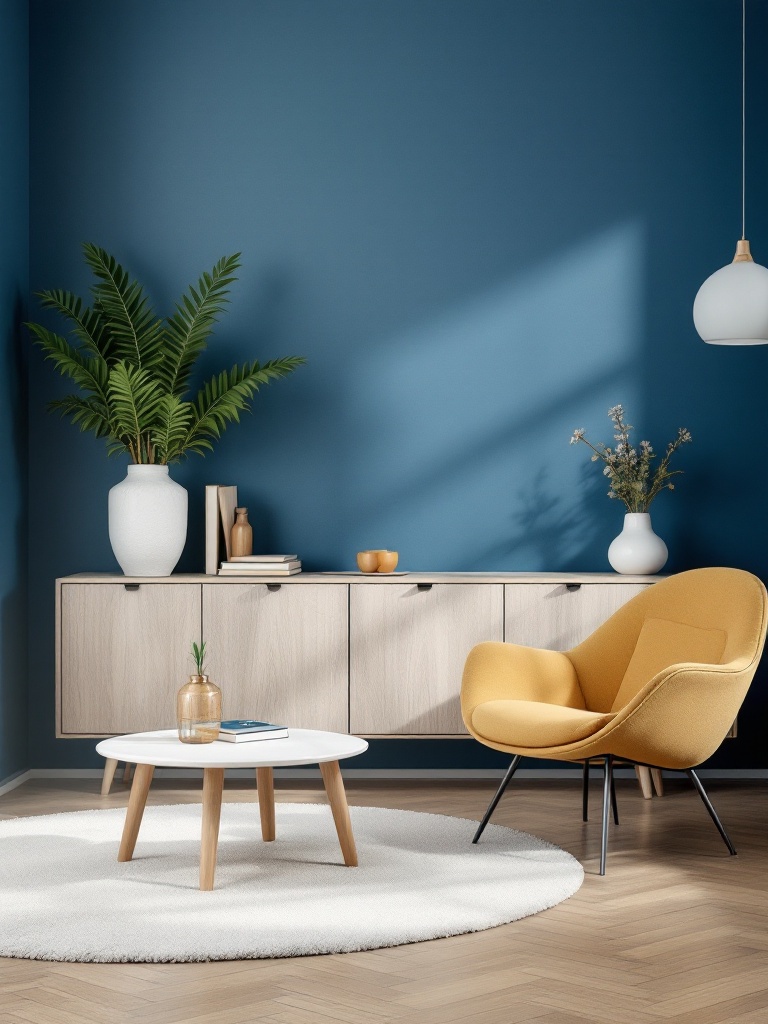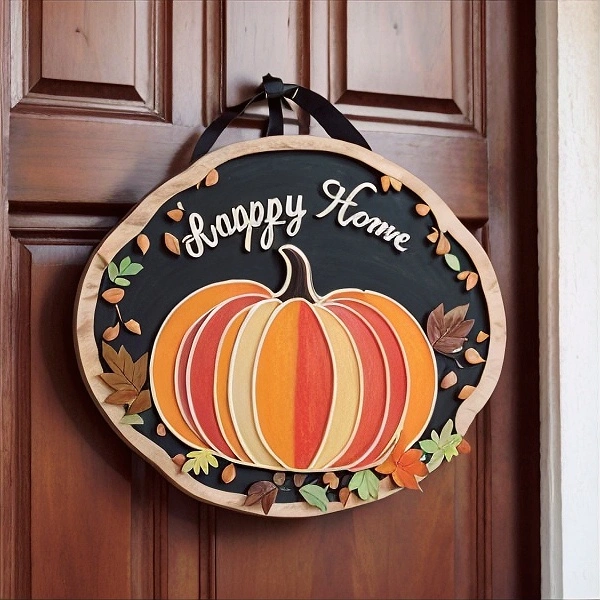Minimalism is a design philosophy focusing on simplicity, functionality, and the use of space to create a serene environment. However, incorporating vibrant colors into a minimalist home can add personality and warmth to an otherwise understated palette. This article delves into seven colorful minimalist home designs that balance simplicity with bursts of color, creating spaces that are both stylish and inviting.
By integrating clean lines and functional elements with carefully chosen colors, these designs demonstrate that a minimalist approach doesn’t have to be devoid of flair. From striking accent walls to playful furniture choices, discover how you can achieve a colorful minimalist home without compromising on the principles of minimalism.
1. Bright Accents
In a predominantly white room, incorporating bright accents can bring the space to life. Consider a bold yellow sofa or a vibrant red painting as focal points. These additions can make a minimalist design feel lively while keeping the overall aesthetic uncluttered and harmonious.
The key is to limit the number of colorful items to maintain the minimalist ethos; one or two bold accents can transform the space without overwhelming it, ensuring a balance of color and simplicity.
2. Colorful Rugs
A colorful rug can serve as the anchor for a minimalist room, offering both style and comfort. Choose a rug featuring geometric patterns or vibrant hues that contrast with neutral furnishings. It can define areas within an open-concept living space while adding warmth and texture.
When selecting a rug, ensure it complements the color palette of the room to maintain a cohesive look, which is essential in minimalist design. A bold rug serves as a statement piece without overshadowing the simplicity that characterizes this style.
3. Colorful Art Displays
Art can breathe life into a minimalist space, especially when displayed thoughtfully. Select colorful pieces that resonate with your personal taste and position them strategically on blank walls. A single piece of vibrant artwork can serve as a conversation starter and draw attention to the minimalist decor around it.
When curating a gallery wall, maintain a balance by mixing different sizes and styles while ensuring the colors complement each other, thus enhancing the minimalist aesthetic rather than detracting from it.
4. Statement Furniture
Incorporating statement furniture pieces—such as a bright turquoise chair or a red dining table—can add excitement to a minimalist home. These bold selections can serve as focal points, elevating the overall design while preserving the uncluttered essence of minimalism.
Pair these statement pieces with more subdued elements, allowing the vibrant furniture to shine without becoming overwhelming. This creates an engaging visual contrast while adhering to minimalist principles.
5. Playful Accessories
Accessories like cushions, throws, and decorative vases can introduce color into your home without cluttering the space. Opt for a few vibrant accent pieces that complement your minimalist furnishings, such as a bright orange throw pillow on a neutral couch or a colorful ceramic vase on a white shelf.
The trick here is to keep the number of accessories limited, allowing each colorful piece to stand out. This method enhances the minimalist feel while ensuring a lively, appealing atmosphere.
6. Colorful Plants
Incorporating colorful plants is an excellent way to inject life into a minimalist room. Consider vibrant flowering plants or foliage with bright leaves to create an organic burst of color. These plants add a natural element to the space while maintaining the simplicity of a minimalist aesthetic.
Strategically positioning these plants allows them to serve as focal points; even a single striking plant can enhance the room’s vibrancy. Their natural beauty complements the minimalist ethos while adding color and texture.
7. Feature Walls
An impactful way to introduce color in a minimalist home is through a feature wall. Choose a bold color or an interesting pattern for one wall, making it a striking backdrop for your minimalist decor. This technique creates a visual anchor and adds dimension to the space.
Be mindful when selecting colors; a deep, rich hue can add warmth, while lighter tones can make the space feel airy. The goal is to enhance the minimalist philosophy of openness and simplicity while incorporating vivid aesthetics.
Conclusion
Creating a colorful minimalist home involves balancing vibrant elements with the principles of simplicity and functionality. By thoughtfully incorporating colorful accents, art, furniture, and accessories, you can develop a space that feels both lively and serene.
The key lies in selective choices that resonate with your personal style while maintaining an uncluttered environment. Embrace color in a way that complements your minimalist goals, and watch your home transform into a harmonious blend of simplicity and vibrancy.
Frequently Asked Questions
What is minimalism in home design?
Minimalism in home design focuses on simplicity, functionality, and the use of space, eliminating excess clutter and emphasizing a clean aesthetic.
Can I use dark colors in a minimalist home?
Yes, dark colors can be used, but they should be balanced with light elements to maintain a sense of openness and simplicity.
How do I choose a color palette for a minimalist home?
Opt for a limited color palette of two or three complementary colors to keep the design cohesive and uncluttered.
Are colorful accessories a good choice for minimalism?
Absolutely! Colorful accessories can add character to minimalist decor, as long as they are used sparingly to avoid overwhelming the space.
Is it possible to have a colorful minimalist home?
Yes, a colorful minimalist home is achievable by thoughtfully incorporating vibrant colors through accents and carefully selected furnishings while keeping the overall design simple.

